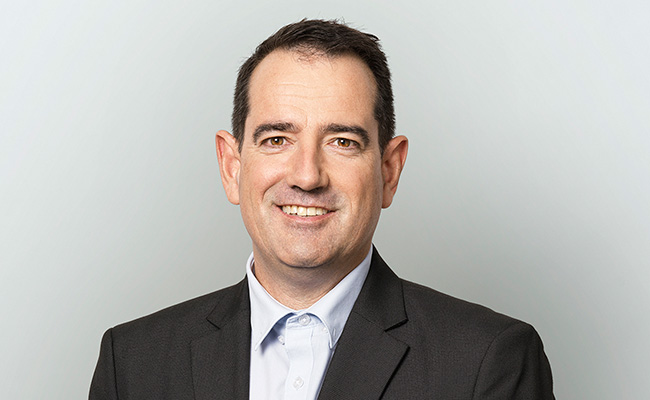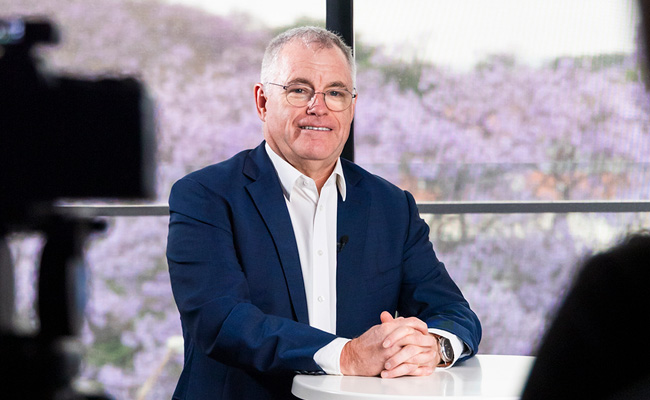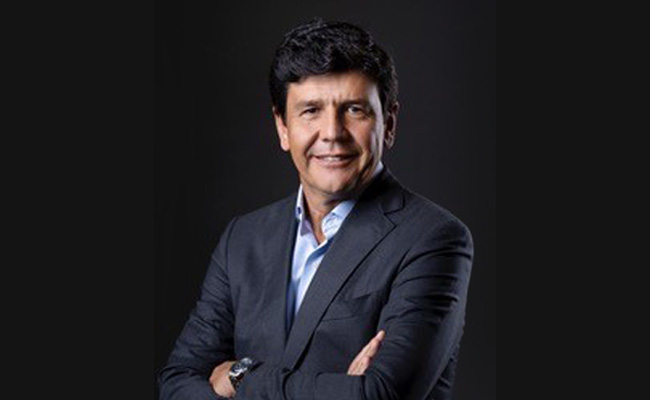Remember the days when the e-commerce assets of Naspers, and its Amsterdam-listed twin Prosus were a drag on performance?
Analysts used to call those food delivery, e-classifieds, e-tail, education technology and payments businesses – basically everything that was not Tencent – the “rump”. Far from a sizzling-on-the-coals complement, the rump was not an appetising steak, but a collection of stakes in companies that contributed negatively to the overall value of the group.
But in the latest set of results, Prosus reported e-commerce revenue growth of 22%, to $3.6bn – ahead of its peers – a $399m improvement in free cash flow to $1.3bn, and a 70% jump in its adjusted earnings before interest, tax, depreciation and amortisation to $530m. Punters who piled into Naspers stock at the start of the year will have enjoyed a 40% return on their investment; those who bought Prosus would by now be 52% in the black.
TJ Strydom caught up with Prosus and Naspers CFO Nico Marais.
A number that jumps out from this half-year’s results is the continuing climb in the e-commerce portfolio’s profits. Did we hear CEO Fabricio Bloisi correctly in the earnings call saying that all of the operating companies are now profitable?
Ja, the main operating companies. For instance, the last one that wasn’t profitable was PayU (the mobile and online payments business) in India. So in aggregate for this period it wasn’t, but if you just look at the second-quarter element of the business it did actually turn profitable. The food-delivery businesses (such as Swiggy in India, iFood in Brazil), the acquisitions that we’ve made (Just Eat Takeaway in Europe) – they are all profitable businesses. Our classifieds business is obviously really profitable now.
What about those education technology investments?
Even some of the edtech businesses are at breakeven.
Prosus has been talking about getting the e-commerce portfolio profitable for years. So, why are we seeing the results now? What has changed? Bloisi used the term “lifestyle e-commerce ecosystem” in his results talk.
The ecosystem view and the scale we are trying to build is starting to come through. Take Latin America, for example, and the Brazilian ecosystem we have created around iFood … It started off as a third-party marketplace business, but we have now added so much to it – first-party delivery for instance. Then we went into more categories such as groceries, pharmacy and beverages, and built a fintech business around that. Now we are providing credit and other financial services to restaurants. And we are no longer only focused on a takeaway model, but brought in some dine-in components. We have leveraged our loyalty programme across that.
At Despegar (an online travel agency that Prosus bought for $1.7bn in the past year), 5% of revenue is now being driven by the iFood platform. We also went into a commercial partnership with Uber.
So all of these things are enhancing and building the ecosystem, and that drives revenue and lowers the cost of (client) acquisition.
How does AI fit into this ecosystem?
If you add AI into this it drives a lot of efficiencies. Whether that is in making deliveries or identifying fraud, or customer-facing in the way of AI assistance. So, it’s not been one thing that has made the e-commerce businesses profitable. It is these various elements that have come together to enhance the ecosystem and then drive top-line growth, margin expansion and efficiencies. That then translates into profitability.
So that is in Latin America; what about the “ecosystem” in Europe?
There (it’s) is less developed. We have the OLX classifieds business and there we have been building through the verticals of autos (selling cars), real estate and jobs. The acquisition of Just Eat Takeaway (for more than €4bn, concluded only a few weeks ago) will now complement that. Obviously it is still early days, but we can start building on that with this high-frequency (such is the nature of a food-delivery business) consumer-facing platform.
A feature of the company for the past couple of years has been the open-ended buyback of Prosus (and Naspers) shares by selling down Tencent stock. How much of a success has this been?
Very successful, right. In Naspers and Prosus together we’ve returned $42bn to our shareholders. You look at 30% of the free-float that has essentially been bought back. That translated, on a per-share basis, to having 18% more of the same asset pool.
For the remaining shareholders – those that did not sell out – we created more than $60bn of value. Not just the buyback – there have obviously been other elements as well. But that is the value created since the start of the buyback, and we will continue. The discount to the underlying net asset value was at more than 50% when we started with this programme, and it has now been below 30% for the last while.
And you are now also considering using the proceeds of other asset sales for these buybacks, perhaps easing up on selling only Tencent stock?
We funded the buyback up until now solely through Tencent. But for instance we’ve sold just more than $1bn in other assets in this six-month period and we think we will probably sell about $2bn in the whole financial year, Tencent being such a good company and with us wanting to be the largest shareholder for a long time to share in the prospects there. We can also achieve that by continuing the buyback, not just by using Tencent, but augmenting that with cash from other sources. We will still use Tencent, but that could be a way of making the (buyback) programme more flexible and even better.
Top image: Naspers and Prosus CFO Nico Marais. Picture: supplied.
Sign up to Currency’s weekly newsletters to receive your own bulletin of weekday news and weekend treats. Register here.













